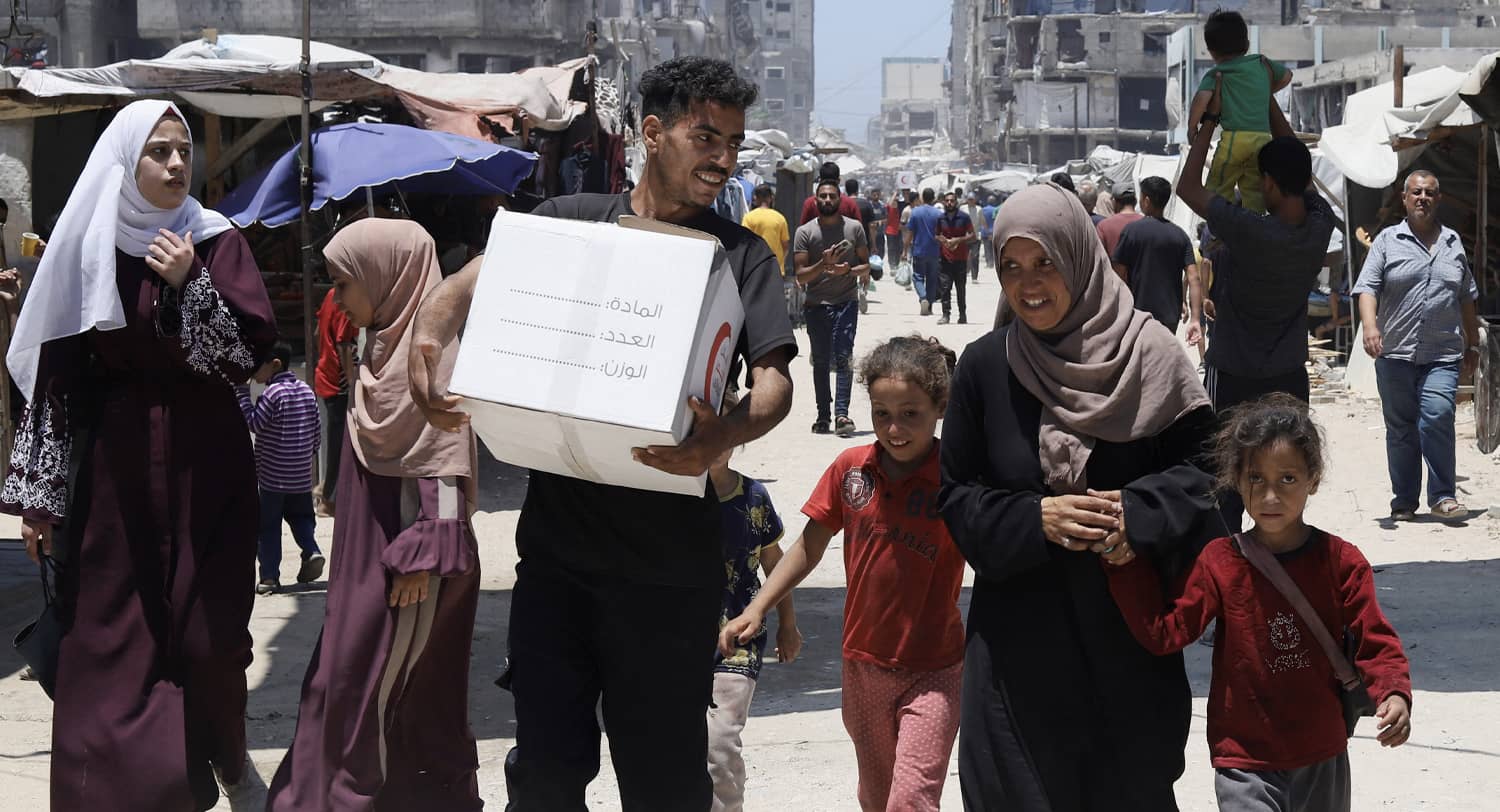In Gaza, a brutal war is being fought against a still-active enemy whose sole purpose (as demonstrated on October 7, 2023) remains the elimination of Israel. At the same time, an information war is being waged in the West, using accusations of “genocide” against Israel as a tool, including by scholars who should know better. Such voices should serve as a wake-up call for decision makers in Israel: in the absence of a coherent and defensible definition of what “the day after” in Gaza would look like, it is easy for such claims to fill the void.
Omer Bartov, the son of one of Israel’s best novelists, was my peer in Tel Aviv University’s undergraduate class majoring in history. He was in many ways the brightest among us, already an experienced combat soldier and a sharp and questioning intellect. Driven by the quest to understand the motivations of men at war, even those who served terrible regimes, he went on to a career of scholarship focused on aspects of the Holocaust.
It was therefore sad for me to read his recent New York Times opinion piece asserting falsely that Israel is carrying out a genocidal design in Gaza. It repeats an argument Bartov made in Hebrew in August 2024, without much of the earlier piece’s empathy for Israeli society since October 7, 2023, for instance, the specific horror at Kibbutz Be’eri, which he knows well.
A close reading of the New York Times essay reveals Bartov has decided to ignore the IDF’s actual conduct in Gaza. In the summer of 2024, when he gave a talk at Ben Gurion University in the Negev, he managed to sit down and talk with veterans of that conflict. As they detailed to him then, the IDF, in which they served in Gaza, does try to draw the line – not always successfully – between terrorists and non-combatants. That is their orders and their intent. Certainly not the attitude presumably inculcated in an army which pursues a genocidal intent.
The Key Element of Intent
Many of those who disagree with Bartov do find a genocidal intent in the current war in Gaza – but it is the intent of Hamas. Bartov repeatedly draws comparisons between some angry utterings of Israelis and those of Hitler’s followers, but even a cursory reading of the Hamas Covenant, an official and formative text – specifically, article 22, which clearly reads as a 1988 rendition of wartime Nazi propaganda about the destructive role of the Jews in world affairs – should be enough to turn this claim on its head.
This is particularly worrisome, first of all because the accusation is liable to become a tool in the hands of those in the region and in the West who actively seek a Hamas victory, not a good result for either the Palestinians or the Israelis. But the Bartov accusation is also a perversion of “genocide” as defined in the international convention to mean actions committed “with the intent to destroy, in whole or in part, a national, ethnic, racial or religious group.”
On the issue of intent, Bartov relies mainly on the dim-witted mutterings of some Israeli politicians who have no role in government policy. Quoting Likud Member of Knesset Nissim Vaturi as evidence of government policy is roughly the equivalent of singling out the social media posts of Congresswoman Majorie Taylor Greene as incriminating evidence of Trump administration policy.
True, Prime Minister Netanyahu did use the Biblical term Amalekites, who had inflicted horrors upon the stragglers of the Children of Israel in the desert, and whom the Israelites in the Bible were instructed to destroy, root and branch. But this phrase was clearly and explicitly aimed at Hamas as the perpetrators of a horror, not the Palestinian people at large.
In a public statement on January 26, 2024, Netanyahu made it quite clear that the war is “against Hamas terrorists, not against Palestinian civilians,” not exactly a genocidal dog whistle which the IDF could presumably interpret as meaning the opposite of what he actually said. There is no shred of evidence of any planning, let alone orders, involving mass killings. Israel, in fact, is allowing an active enemy at wartime to take possession of hundreds of truckloads a day in humanitarian supplies.
The Nature of the Gaza War
Why, then, is such immense destruction inflicted on large parts of Gaza, and why are such tough measures taken to clear whole areas from their civilian population (who are urged to move elsewhere)? Bartov attributes this to an intent to make Gaza uninhabitable: and he can easily find quotes from various angry Israelis who advocate “migration” and indeed happily latched on to Trump’s presumed vision of a Palestinian-free “Riviera.” But while some politicians do use such language, the IDF has a much simpler and straightforward explanation as to why such measures are needed, which has nothing to do with Bartov’s interpretation of a genocidal intent.
This is the point in which the essay fails to mention altogether the most salient aspect of Hamas’ way of war in Gaza: namely, the immense network of tunnels. They were built for attack into Israel, for fighting within Gaza, for storage (and holding hostages) and for smuggling weapons over the Egyptian border, tunnels running from and under housing, hospitals, schools, mosques. None was built to shelter the civilian population. All or at least much of it needs to be demolished if Hamas is to be denied the capacity to do further harm, and this can hardly be accomplished without extensive collateral damage. Therein, rather than in conspiratorial intent, lies the reason for the destructive impact of the war.
Bartov goes a step further, arguing that the war must be genocidal in nature because Hamas is already finished as a fighting force. This is a half-truth (often more dangerous than a straight lie). Hamas has indeed been badly mauled since October 7, 2023, but it is still in control of much of the population there. Any doubts Israelis wanted to entertain about their capacity and their intent were dispelled by the ghoulish spectacles Hamas, and its colleagues from Palestinian Islamic Jihad, staged again and again during the previous round of hostage releases. Hence also the quest to create a “humanitarian city” in Gaza – not a “concentration camp” on the way to forced migration or death, but rather a way of loosening Hamas’ grip on the people.
Bartov does have a point when it comes to the lack of empathy in Israel nowadays towards the very real Palestinian suffering. But lack of empathy, troubling as it may be, is not the moral equivalent of genocidal intent.
Significantly, such accusations about intent gain traction because the Israeli government has yet to openly explain a vision for the “the day after” in Gaza, which must by necessity include the provision of humanitarian supplies and a design for the future reconstruction of the Strip. And yet again, the absence of such a plan is evidence of political incoherence, not of nefarious intent.



